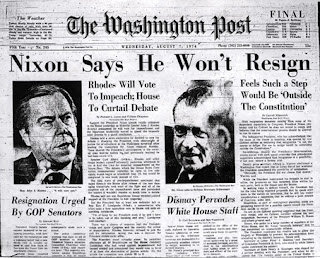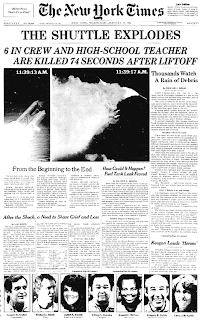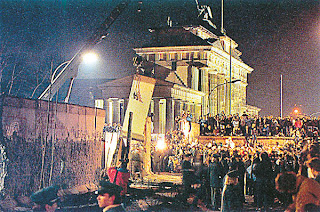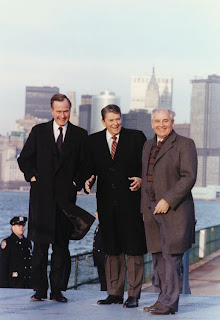The latest major turning point in American history occurred on a beautiful autumn morning in 2001. Four hijacked airplanes were used as weapons to cause destruction and terror. As the dust settled, Americans realized their vulnerability. However, they also pulled together to present a united front.
The military response to September 11th's terrorist attack was meant to neutralize Al Qaeda who had been blamed for the attack. Another group called the Taliban was also targeted. This battle continues today and has become a source of contention between different groups in the United States.
 SEPTEMBER 11TH TERRORIST ATTACK
SEPTEMBER 11TH TERRORIST ATTACKEarly on September 11, 2001, terrorists hijacked four commercial airplanes from airports on the east coast. Three of the planes were flown into buildings and one crashed in a field. Within hours, New York's World Trade Center had collapsed and the Pentagon building was filled with smoking rubble (Kelly, n.d.). Americans watched the terror unfold, partly on live television. (Photo Courtesy: Draves, n.d.)
*****
PRESIDENT BUSH LEARNS OF TERRORIST ATTACK
President Bush was visiting with elementary school students when he was notified of the terrorist attack in New York (Solcomhouse, n.d.). At that point, he did not know that a plane would crash into the Pentagon and another in a field. (Photo Courtesy: Radified.com, n.d.)*****
PRESIDENT BUSH'S SEPTEMBER 11TH SPEECH
"Today, our nation saw evil, the very worst of human nature, and we responded with the best of America, with the daring of our rescue workers, with the caring for strangers and neighbors who came to give blood and help in any way they could" ...President George Bush (Archives of Global Change in the 21st Century, n.d.)
As the day's events settled in to the minds of Americans and the World, President Bush addressed the nation. He reminded everyone that America would rise above the trauma and prevail (Archives for Global Change in the 21st Century, n.d.).
*****

FIREFIGHTERS RAISE THE FLAG OVER THE WORLD TRADE CENTER RUBBLE
In the days following the September 11th attacks, Americans came to grips with a new reality. No longer was America safe from terrorism; the fear set-in. Along with fear though came hope. Firefighters erected the American flag over the smoldering World Trade Center site, reminding Americans that they would persevere. (Photo Courtesy: Professional Firefighters of Salem 2892, n.d.)
*****

FIREFIGHTERS RAISE THE FLAG OVER THE WORLD TRADE CENTER RUBBLE
In the days following the September 11th attacks, Americans came to grips with a new reality. No longer was America safe from terrorism; the fear set-in. Along with fear though came hope. Firefighters erected the American flag over the smoldering World Trade Center site, reminding Americans that they would persevere. (Photo Courtesy: Professional Firefighters of Salem 2892, n.d.)
*****
 2009 PENTAGON MEMORIAL SERVICE
2009 PENTAGON MEMORIAL SERVICE
 2009 PENTAGON MEMORIAL SERVICE
2009 PENTAGON MEMORIAL SERVICEOn the September 11th Anniversary each year, memorial events are held at both the World Trade Center site and the Pentagon, as well as the site of the fourth plane's crash (Skillings, 2010). The memorials are a constant reminder of how America picked itself up after the tragedy. (Photo Courtesy: Bookwormom, 2008)
 TROOPS IN THE MIDDLE EAST
TROOPS IN THE MIDDLE EAST
America's response to the September 11th terrorist attack on a military level was to wage a "war on terror" both at home and in countries where there is an Al Qaeda/ Taliban stronghold. Some Americans saw this as a step toward defending the country from future attacks. (Photo Courtesy: Rick, 2007)
*****
MAP: IRAQ COMBAT LOCATIONS
Though the September 11th response began with combat in Afghanistan, the military response soon moved to Iraq. President Bush cited terrorist tendencies and links in Iraq as the reason for the spread of combat (BBC, 2003). (Photo Courtesy: Da Costa, n.d.)
*****
References:
*****
 TROOPS IN THE MIDDLE EAST
TROOPS IN THE MIDDLE EASTAmerica's response to the September 11th terrorist attack on a military level was to wage a "war on terror" both at home and in countries where there is an Al Qaeda/ Taliban stronghold. Some Americans saw this as a step toward defending the country from future attacks. (Photo Courtesy: Rick, 2007)
*****
MAP: IRAQ COMBAT LOCATIONS
Though the September 11th response began with combat in Afghanistan, the military response soon moved to Iraq. President Bush cited terrorist tendencies and links in Iraq as the reason for the spread of combat (BBC, 2003). (Photo Courtesy: Da Costa, n.d.)
*****
IRAQ/ AFGHANISTAN WAR PROTESTORS
Yet others felt the wars in Iraq and Afghanistan were not the best way to secure America from future terrorist attacks. Protestors expressed their disagreement with the combat situations, which led others to think about whether the military response has been a success. (Photo Courtesy: UPI.com, n.d.)
*****
TROOPS PACKING OUT OF IRAQ
Though the combat in Afghanistan continues, American troops have started to withdraw from Iraq (Santana, 2010). Whether the military response to the September 11th attack was successful is yet to be seen. (Photo Courtesy: Santana, 2010)
*****
Yet others felt the wars in Iraq and Afghanistan were not the best way to secure America from future terrorist attacks. Protestors expressed their disagreement with the combat situations, which led others to think about whether the military response has been a success. (Photo Courtesy: UPI.com, n.d.)
*****
TROOPS PACKING OUT OF IRAQ
Though the combat in Afghanistan continues, American troops have started to withdraw from Iraq (Santana, 2010). Whether the military response to the September 11th attack was successful is yet to be seen. (Photo Courtesy: Santana, 2010)
*****
References:
Archives of Global Change in the 21st Century. (n.d.). President Bush 9/11/2001. Retrieved from http://www.september11news.com/PresidentBush.htm
BBC. (2003, May 29). In quotes: Reasons for the Iraq war. Retrieved from http://news.bbc.co.uk/2/hi/middle_east/2948068.stm
Bookwormom. (2008, September 11). Pentagon memorial. Retrieved from http://bookwormom.blogspot.com/2008/09/pentagon-memorial-dedicated.html
Da Costa. (n.d.). Shock and awe. Retrieved from http://www.franciscodacosta.com/articles/shock.html
BBC. (2003, May 29). In quotes: Reasons for the Iraq war. Retrieved from http://news.bbc.co.uk/2/hi/middle_east/2948068.stm
Bookwormom. (2008, September 11). Pentagon memorial. Retrieved from http://bookwormom.blogspot.com/2008/09/pentagon-memorial-dedicated.html
Da Costa. (n.d.). Shock and awe. Retrieved from http://www.franciscodacosta.com/articles/shock.html
Draves, A. (n.d.). September 11, 2001....The new day of infamy. Retrieved from http://www.draves.com/sept11/photo.htm
Kelly, M. (n.d.). Terrorist attack: World Trade Center on September 11. Retrieved from http://americanhistory.about.com/od/terroris1/p/wtc_September11.htm
Professional Firefighters of Salem 2892. (n.d.). September 11, 2001. Retrieved from http://www.salemfd.org/343.html
Radified.com. (n.d.). (no name). Retrieved from http://radified.com/911/911_bush_reaction.htm
Radified.com. (n.d.). (no name). Retrieved from http://radified.com/911/911_bush_reaction.htm
Rick, J. (2007, August 15). Withdrawal is not an option. Retrieved from http://jonathanrick.com/tag/iraq-war/
Santana, R. (2010, August 3). U.S. troops pack-up millions of items in Iraq. Retrieved from http://www.msnbc.msn.com/id/38542232/ns/world_news-mideast/n_africa
Santana, R. (2010, August 3). U.S. troops pack-up millions of items in Iraq. Retrieved from http://www.msnbc.msn.com/id/38542232/ns/world_news-mideast/n_africa
Skillings, P. (2010). Remember September 11 on ninth anniversary of 9/11. Retrieved from http://manhattan.about.com/od/september11th2001/a/911memorial.htm
Solcomhouse. (n.d.). President Bush timeline September 11, 2001. Retrieved from http://www.solcomhouse.com/bushtime.htm
UPI.com. (n.d.). Demonstrators protest war in Iraq in Washington. Retrieved from http://www.upi.com/enl-win/f2f490e651af85aa7e94d39524c1bd24/
Solcomhouse. (n.d.). President Bush timeline September 11, 2001. Retrieved from http://www.solcomhouse.com/bushtime.htm
UPI.com. (n.d.). Demonstrators protest war in Iraq in Washington. Retrieved from http://www.upi.com/enl-win/f2f490e651af85aa7e94d39524c1bd24/











































